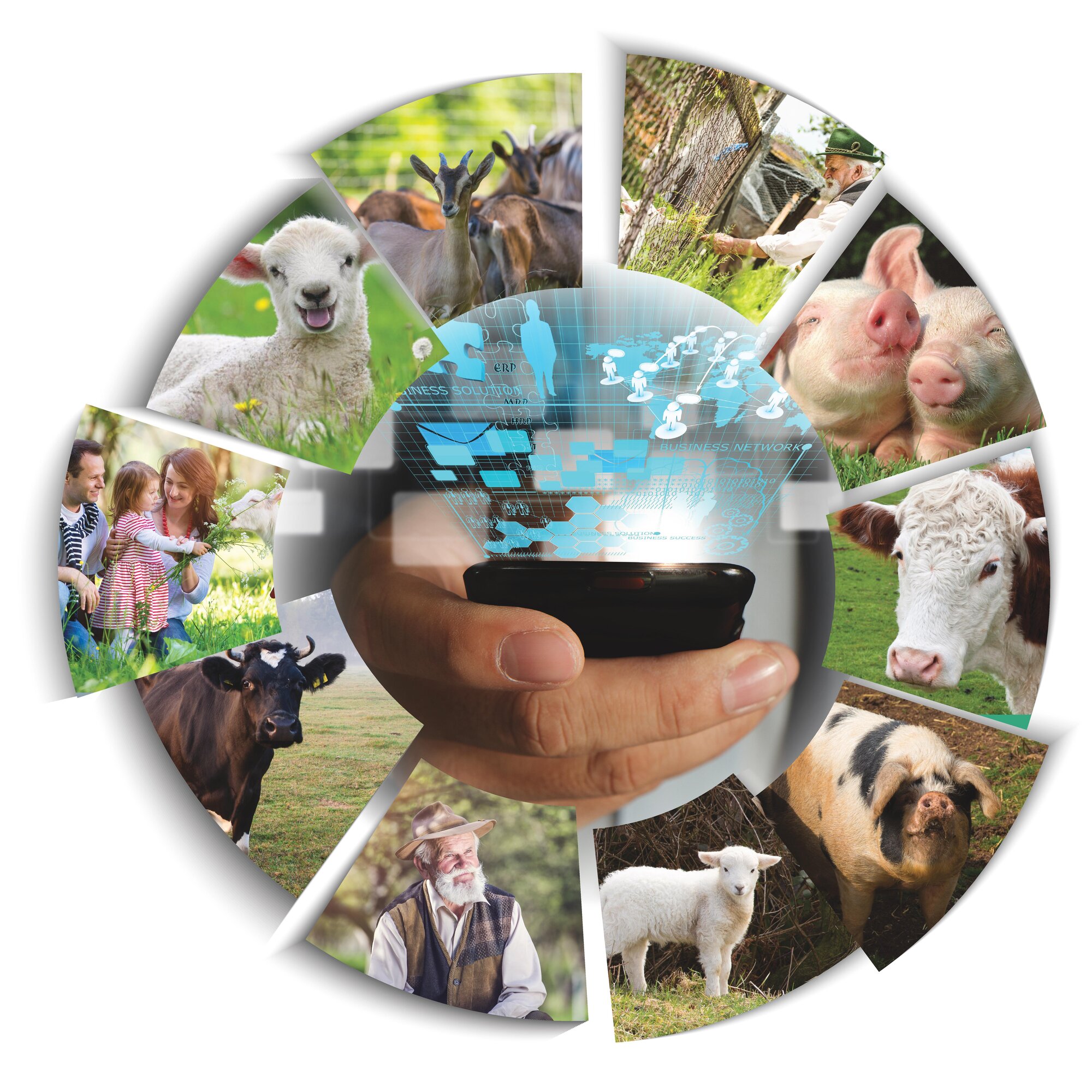Tracking Animal Movements and Health Records
Developing an online tool for the entire value chain tracking animals’ movements through IoT technologies, in order to improve animal welfare.

Concept
This Flagship Innovation Experiment (FIE) is committed to improving animal welfare through a reliable online tool, self-registering animals’ movements and health records for efficient traceability under advanced security requirements. An open-access data platform collects and organises the information on each animal’s individual movement or behaviour by using Internet of Things (IoT) as well as Radio-Frequency Identification (RFID) technologies.
With this solution, farmers do not need paper files anymore: everything is digitized and transfered through the IoT device from your phone and into your phone. It allows for better safety, as you can scan animal transport from 25 meters, without direct contact. The transport can be scanned either statically, by stopping the transport, scanning and verifying before letting it driving away, or dynamically while the transport is still driving (at a driving speed of over 80 km/h).. Dynamic scanning can help reduce transportation time, hence improving its efficiency and reducing the stress for the animals.
Furthermore, the tool offers the possibility to register the data for a significantly higher number of animals simultaneously, thereby increasing the speed and accuracy of tracking processes. The FIE serves the entire value chain, from farms to stores, as its integrated information system dramatically decreases the number of paper forms currently used to process and store information about holdings, stocks and, most importantly, animals and their well-being.
Implementation
This solution was developed in Romania. We started by validating the solution under laboratory conditions in the University Politehnica of Bucharest. Furthermore, we carried out a live demonstration by monitoring and tracking one animal transport between two cattle farms located in the Alba Iulia county. Cows were used for the experiments.
One of the greatest challenges that our FIE faced was that the attachments to animals’ ear tags have legal constraints on weight and, as such, required us to research a novel solution for IoT devices where the entire hardware (microchip, PCB, battery holder and battery) needed to be under 7 grams. The process was quite arduous and required a large number of iterations for: choosing the hardware stack, manufacturing the PCB, soldering and assembling the hardware, designing and 3D-printing the casing and the ear tag attach-and-detach mechanism, and putting all of these components together towards implementing an innovative IoT device.
Lessons Learnt
Digitizing processes in livestock transportation is beneficial to all stakeholders: farmers, sanitary/veterinary authorities, local and central authorities. Moving from paper documents to digital documents reduces the risk of violations since digital signatures are more reliable and easily verifiable.
Attachments to animals’ ear tags have legal constraints on weight and size, which forced us to create a 3D design for the casing at a very small size. One of the biggest challenge was to reduce the weight of the device for animals, to make it more confortable for them to wear. We have performed measurements based on multiple form-factors for ear tags and have finalized the design for a flexible attach-and-detach mechanism, as well as for an easy-to-produce detaching tool. We produced more than 100 IoT devices and casings. Throughout this process, we have experimented with multiple types of materials in search of a proper design that takes flexibility and durability into account. The final product is smaller than an average coin.
Battery lifetime of the IoT devices needs to be long in order to provide a lucrative and cost-effective solution for farmers.The electronics chamber of the casing needs to be air-tight to prevent water from affecting the IoT device. As such, changing the coin-cell battery is not a feasible feature. This implies that the battery consumption of the IoT device needs to be minimized. Based on our technical experiments under controlled laboratory conditions, we have noticed that the initial design of the IoT devices was leading to high-power consumption (a lifetime of around 1 month).
The most important lesson learnt is that end-user feedback is invaluable - research and discussions with farmers and transporters facilitated by FCBR and mAgro have been paramount to shaping the functional requirements of the digital infrastructure. The best practice we have extracted from this experience is that user feedback and acceptance testing should be an essential part of every step of the process: ideation, design, implementation and validation. This makes the process more adaptable to change and more agile.
This FIE is now looking to continue researches and developments on our TIT - IoT device with other species (sheep, goats, pigs), developing the technology to insert the TIT as a IoT device into the animal identificatiion industry replacing / improving / completing RFID technology.

